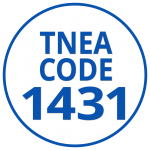
| S.No | Faculty Name | Designation |
| 1 | S JEYANTHI | Assistant Professor |
| 2 | B.LAKSHMI | Assistant Professor |
This department is a full-fledged one and it has its own laboratories, computers and software to deal all the subjects compulsory by the University. The department has experienced and dedicated faculty members to handle all the subjects. The students have been given opportunities to interact with experts in order to update their knowledge to the latest trends. Apart from regular academic work load, the students have to do internship and projects as part of their knowledge enhancement. Regular online and paper tests are being given to the students who can update and use that knowledge while they attend their aptitude test for their placement opportunities.
- To prepare students to excel in the computing profession by providing solid technical foundations in the field of computer applications.
- To provide students various computing skills like the analysis, design and development of innovative software products to meet the industry needs.
- To motivate students to pursue lifelong learning and to do research as computing professionals and scientists.
- To motivate students to communicate and function effectively in teams in multidisciplinary fields within the global, societal and environmental context.
On successful completion of the program:
- Engineering knowledge: Apply the knowledge of mathematics, science, engineering fundamentals, and an engineering specialization to the solution of complex engineering problems.
- Problem analysis: Identify, formulate, review research literature, and analyze complex engineering problems reaching substantiated conclusions using first principles of mathematics, natural sciences, and engineering sciences.
- Design/development of solutions: Design solutions for complex engineering problems and design system components or processes that meet the specified needs with appropriate consideration for the public health and safety, and the cultural, societal, and environmental considerations.
- Conduct investigations of complex problems: Use research-based knowledge and research methods including design of experiments, analysis and interpretation of data, and synthesis of the information to provide valid conclusions.
- Modern tool usage: Create, select, and apply appropriate techniques, resources, and modern engineering and IT tools including prediction and modeling to complex engineering activities with an understanding of the limitations.
- The engineer and society: Apply reasoning informed by the contextual knowledge to assess societal, health, safety, legal and cultural issues and the consequent responsibilities relevant to the professional engineering practice.
- Environment and sustainability: Understand the impact of the professional engineering solutions in societal and environmental contexts, and demonstrate the knowledge of, and need for sustainable development.
- Ethics: Apply ethical principles and commit to professional ethics and responsibilities and norms of the engineering practice.
- Individual and team work: Function effectively as an individual, and as a member or leader in diverse teams, and in multidisciplinary settings.
- Communication: Communicate effectively on complex engineering activities with the engineering community and with society at large, such as, being able to comprehend and write effective reports and design documentation, make effective presentations, and give and receive clear instructions.
- Project management and finance: Demonstrate knowledge and understanding of the engineering and management principles and apply these to one’s own work, as a member and leader in a team, to manage projects and in multidisciplinary environments.
- Life-long learning: Recognize the need for, and have the preparation and ability to engage in independent and life-long learning in the broadest context of technological change.
- Enable the students to select the suitable data model, appropriate architecture and platform to implement a system with good performance.
- Enable the students to design and integrate various system based components to provide user interactive solutions for various challenges.















